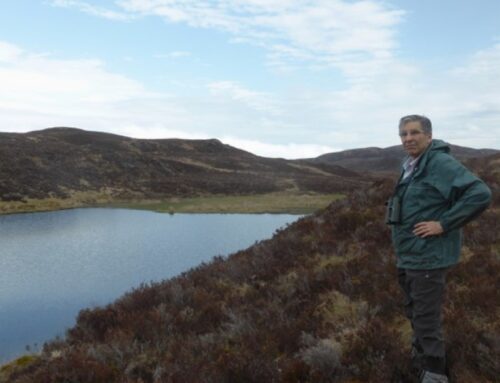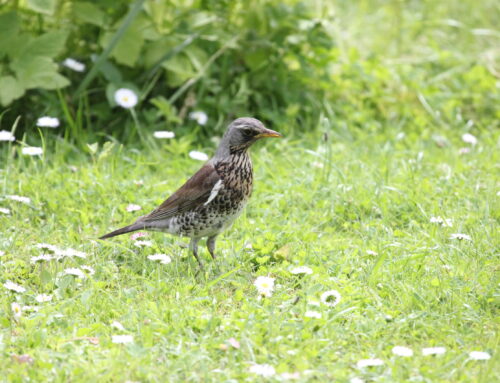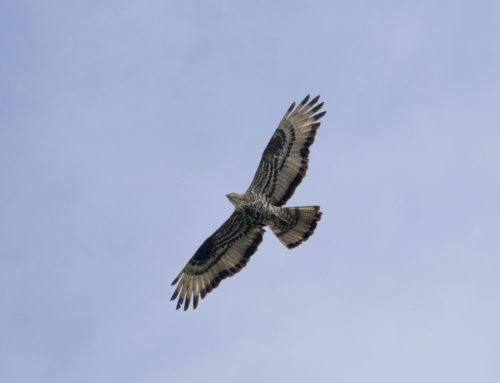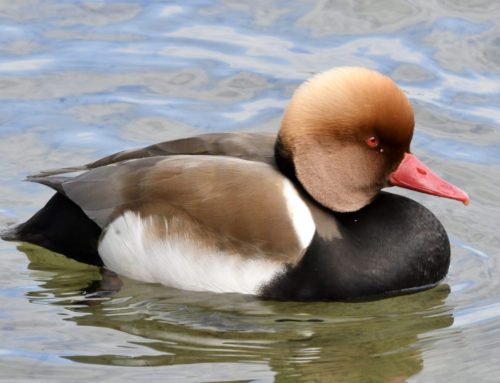An appeal for breeding records of European Serin

European Serin, by Hedera Baltica
The RBBP are currently publishing a series of “From the archives” papers in British Birds, with this work being led by Panel Archivist (and previous Secretary) Mark Holling. A paper on the probable breeding of Great Grey Shrikes in Scotland was published in July 2022, and a summary of Spotted Sandpiper breeding activity in the UK will be published in January 2023.
Following these papers, Mark intends to review the breeding history of the European Serin in the UK, documenting the rise and fall of this species, from the first breeding in 1967 to the last known breeding in 2006. However, we believe it is distinctly possible that the RBBP archive does not include all known records of breeding or potentially breeding Serin in the UK since the Panel’s inception in 1973. Records may have been withheld by observers, or not submitted to the RBBP through the county recorder network during periods when reporting was not as complete as it is nowadays.
We are keen to ensure we have as complete an archive as possible to draw on for this new paper, intended for the May 2023 issue of British Birds. We are therefore appealing for observers and county recorders to check whether they know of any breeding Serin records not previously reported by the RBBP. This includes records of male birds singing in suitable habitat, as well as birds showing more advanced breeding behaviour.
Below we give the records known to the RBBP, as extracted from our annual reports. If you know of records from years and/or counties not featured below, or records from counties and years which are reported upon below but you believe may be additional, please contact the RBBP Secretary Mark Eaton at secretary@rbbp.org.uk. Note that if any new records shared with us are not in the relevant county bird club archive, we will forward records appropriately.
Please send us any additional records by 31st January 2023 to enable them to be included in analyses for this new paper. Thanks!

European Serin, by Hedera Baltica
Note the records below, together with any additional commentary from the annual reports they came from, can be downloaded for Serin, or any other species, from the RBBP’s “Explore Reports” function at http://rbbp.org.uk/explore-reports/
No records in 1973-1975, 1977, 1979, 1999, 2001, 2002, 2004, 2005,2007-2012, 2014, 2015, 2017, 2018
2020
Kent One site: a singing male was present at the same site as 2019, from 28th May to 21st June.
2019
Kent One site: a singing male was present from 15th May to 21st July.
2016
Sussex One site: A family party – adult male, a female and a juvenile – arrived at a coastal site on 16th June, leaving the next morning; later, on 17th, two males, one singing, came to the same garden.
2013
Kent One site: one possible breeding pair. A single bird was seen intermittently from 13th April into June with two birds reported on 20th April.
2006
Devon One site: one pair bred. A pair was present from 26th April, and there were two females on 28th and 29th April. One female was seen on a nest on 10th May but the second female left the area. The nest was destroyed in severe storms in mid to late May and neither female was seen again, although the male was still singing on 25th May. Dorset One site: one singing male at a coastal site lingered but did not attract a mate.
Kent One site: one female. Although only seen for one date in mid June, this bird was present in an area where breeding has occurred in the past. In addition, a male was also seen on one date in early June but the habitat was not thought to be suitable and breeding was not suspected.
2003
Essex One site: one singing male on 3rd August.
Norfolk Two sites: (1) pair bred at Holkham, fledging at least two young; (2) pair built nest and was seen copulating near Norwich, but no further evidence of breeding was recorded.
2000
England, SE One locality: one, unsexed, on 16th May and a male on 28th June. Although probable migrants, these are worth recording.
1998
Norfolk One locality: (1) singing male on 13th June only. As in 1997, just one report, this time of a singing male.
1997
Norfolk One locality: male caught and ringed on 15th May.
1996
Cornwall One locality: singing male in May and June.
Kent One locality: pair bred successfully.
Norfolk Four localities: (1)(2) single singing males; (3) female on 11th-12th April; (4) single on 21st April.
1995
Cornwall One locality: singing male on 14th April and pair on 14th May, though not seen subsequently.
1994
Cornwall One locality: singing male on 1st May only.
Suffolk One locality: singing male during 6th-11th April.
1993
Hampshire One locality: singing male from 28th May to 30th June.
Kent One locality: singing male on 31st May and 1st June
1992
Sussex One locality: up to two males and two females in mid May, one male singing to a female, but breeding not proved.
Suffolk One locality: singing male holding territory from 14th May to 26th July.
1991
Devon Two localities: (1)(2) single singing males in May, These are the first reports from Devon since 1988, but there is no cause for optimism with a complete absence of relevant reports from anywhere else in the UK and no sign of a return to the five to nine pairs found in seven of the eight years from 1981.
1990
Cornwall Two localities: (1) pair held territory in a rural garden from 5th to 22nd May; (2) male held territory from 23rd May to 15th July.
1989
Shropshire One locality: pair on 1st May, the male singing, but no subsequent sightings.
1988
Devon One locality: male singing on 7th April, at traditional breeding site.
Dorset Three localities: (1) up to three males singing and apparently holding territory from 22nd February to 22nd March; (2) many records of up to three individuals between 11th April and 7th August, but no evidence of breeding; (3) male singing on 19th February, not looked for subsequently.
Oxfordshire One locality: male holding territory for two weeks in summer.
Shropshire One locality: pair found in July (date unspecified) in a large garden.
1987
Devon One locality: two males, irregularly, between 30th April and early August, at established breeding site.
England, SE One locality: singing male from 15th to 17th April and female on 1st and 3rd June.
Norfolk One locality: one singing in June and July.
Suffolk One locality: pair present in suitable breeding habitat during 14th-20th June.
Dyfed (Carmarthenshire) One locality: pair, with the male singing, on 12th April; said to have been present for two preceding weeks.
1986
Devon One locality: two males from 24th April to mid August, but no sign of a female, the first break after five successful years.
Kent One locality: male singing on 1st July, but no suggestion of breeding.
1985
Devon Three localities: (1) two males and one female from 8th April to August, only one brood (of 3) reared; (2) female on 27th April, immature on 3rd August and 11th and 13th October, and male and female on 28th October; (3) male singing at a former breeding site on 6th and 10th June. Un-named county: One locality: pair, with song, and copulation observed, in May, but no evidence of successful breeding.
Kent One locality: nine bird-days between 1st April and 15th May, with singing males on 16th, 26th and 30th April, and females on other dates, then one female from 8th to 15th May.
1984
Devon Two localities: (1) observed or heard between 6th April and 25th July, male singing and/or displaying on eight dates, nest found in December; (2) observed or heard between 11th April and 25th August, originally two males and two females, but one female disappeared, pair reared five young from two broods.
Dorset One locality: pair showed intentions of breeding, nest material being carried by female on two occasions in late April.
Shropshire One locality: male singing on 30th May; the same, or another, male singing 4 km away on 9th June.
1983
Devon Three sites: (1) male singing on five dates between 28th March and 12th May, with display in mid April; (2) immature on 28th September; (3) present from 8th April to 23rd August, with maximum of three singing males and two females, two pairs bred and reared at least six young from three broods.
Dorset One site: juvenile trapped on 13th July.
Kent One site: male on 24th April, two males on 25th April, joined by female on 26th, two females on 27th, pair on 6th May, female on 8th May, and male on 3rd June.
Norfolk One site: singing male on 3rd June. Suffolk One locality: singing male on 30th May, not seen or heard subsequently.
1982
Devon Three sites: (1) singles on 12th May, when singing, and 9th June; (2) present from 22nd March to 22nd August, with three singing males and one female, one pair reared seven young in two broods; (3) female on 11th April and male on 20th June.
Hertfordshire One site: one singing on 26th May, not recorded on further visits.
Kent One site: male and female during 28th February to 7th March, female only during 8th to 23rd March, one, probably a male, on 23rd October, two on 8th November, female during 21st to 23rd November.
1981
Devon Three sites: (1) presentfrom2lst April to 28th August, pair reared six young from two broods (3 and 3), second singing male present; (2) present from 12th April to 29th July, pair reared at least three young, at least one extra singing male; (3) present from 9th April to 10th July, two singing males and a probable female, breeding probably attempted but presumed unsuccessful.
1980
Devon One site: male singing and displaying during 3rd-24th July.
1978
Devon Three sites: (1) pair present from 8th May to 1st October, reared two broods, totalling five to seven young; (2) pair on 11th May; (3) male singing in June.
Worcester One site: two, presumed to be pair, the male in song, on 17th-18th June.
1976
Kent One site: male singing on 23rd May
Lincoln/south Humberside One site: male singing from 5th to 7th May






